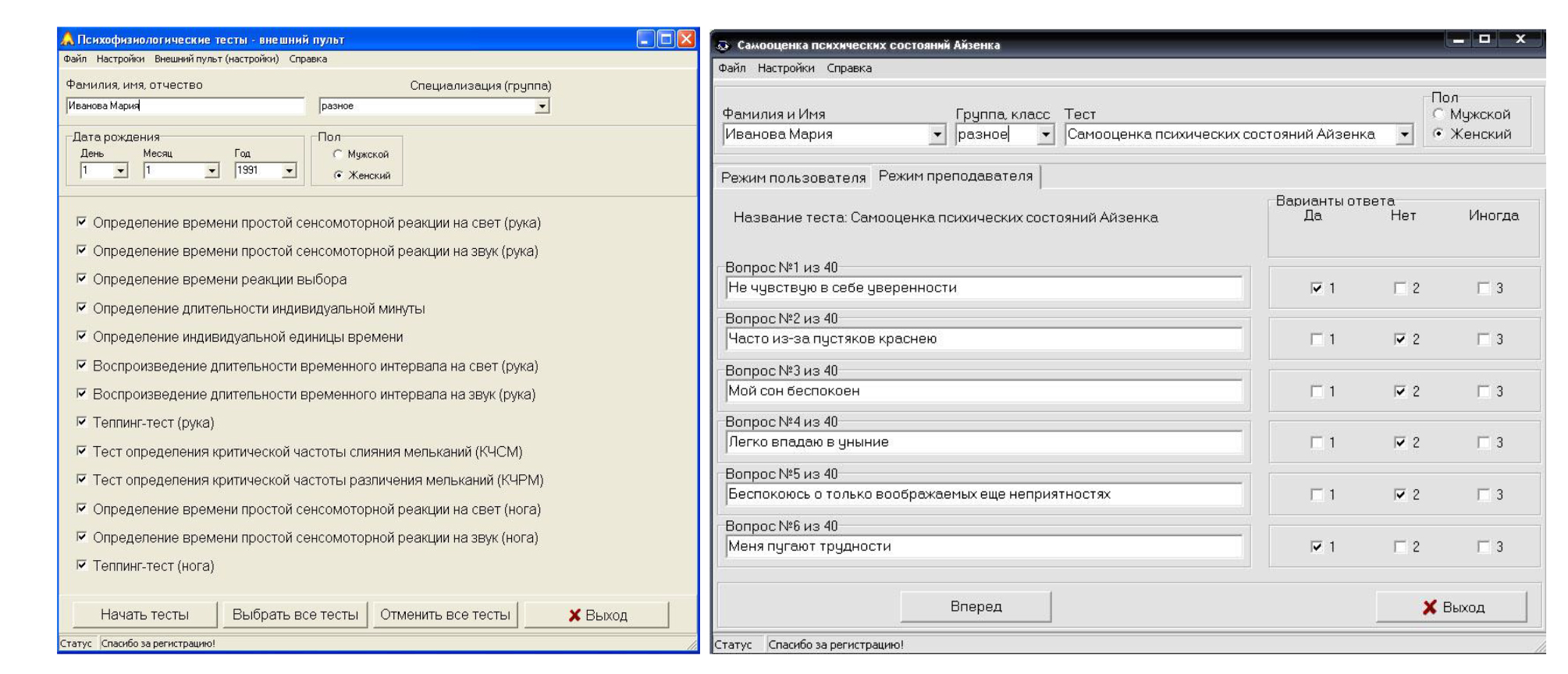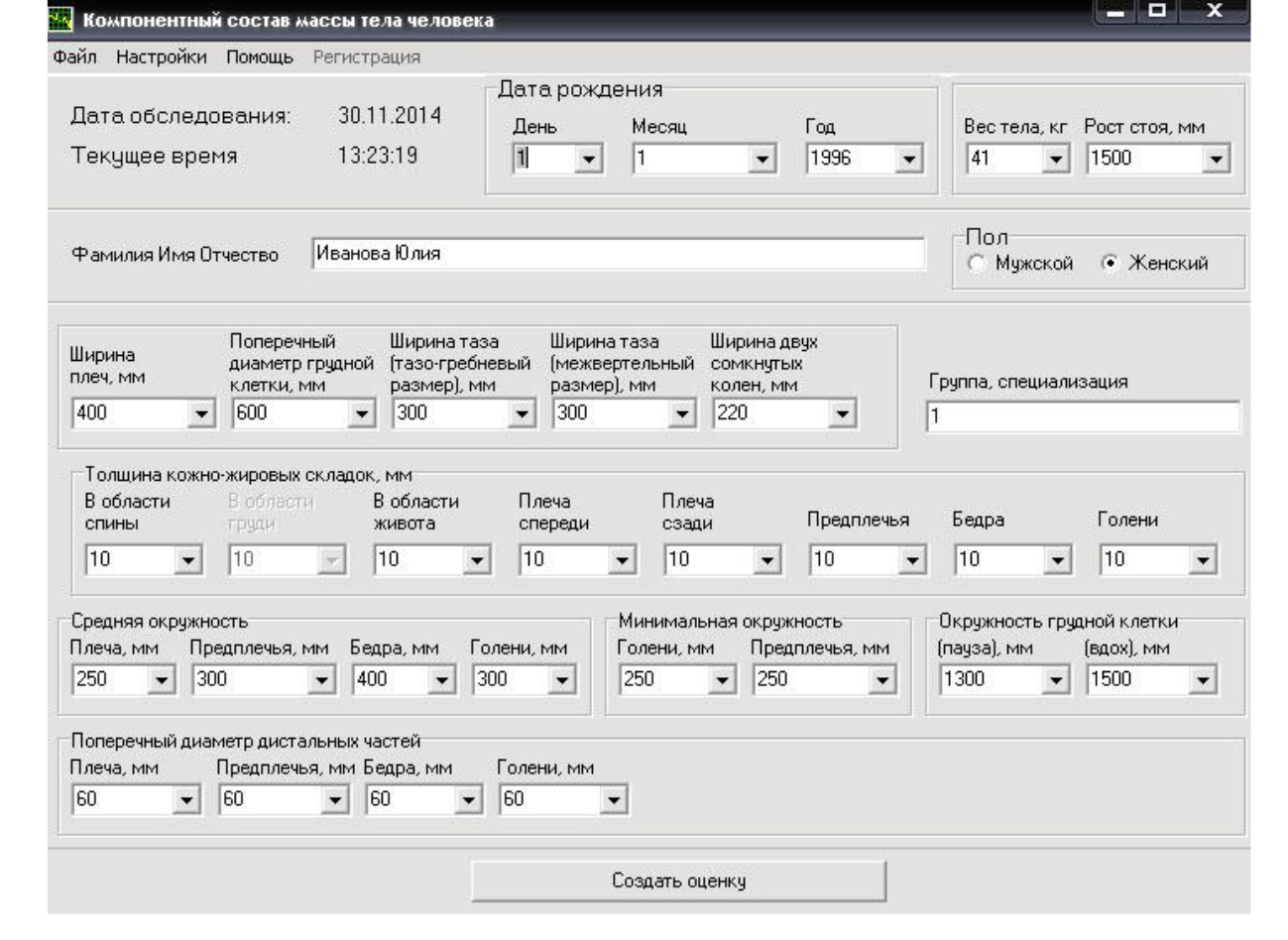Development of automated systems of diagnostics and analysis of various aspects of athlete's fitness
Фотографии:
ˑ:
Dr.Biol., Professor J.V. Koryagina1
Ph.D. S.V. Nopin1
Ph.D. V.A. Blinov1
1Siberian State University of Physical Culture and Sport, Omsk
Keywords: sport, information technology, testing, functional state, computerized systems, training process
Introduction
It is the fundamentally new requirements to the theoretical and methodological grounds of an athletic training process that are being formed today to address new challenges in the modern sport development process. Modern training process management models are largely based on the athlete’s physical conditionality and training workloads related data and analyses. The efficient management is impossible unless due theoretical and methodological basics of applied information technologies are applied to help implement the latest scientific and technological achievements in the athletic training systems.
The purpose of the study was to develop the theoretical and methodological basics for diagnostic tools applicable for the athletic fitness component analysis designed on an integrated basis.
Materials and methods
The study was conducted with the use of the Hardware and Software Complexes (HSC) and the relevant application software tools designed based on a few research studies and foregoing software products with support of the latest developments in computerized psycho-diagnostics area [1, 5, 7, 8]. Every methodology applied in the study was verified by the relevant standard verification procedure.
Results and discussion
Any sport may be viewed as an ideal model for implementation of new ideas coming up when the methodological support (MS) for an athletic training system are developed. As things now stand, there are multiple application tools and complexes on the market to address a variety of issues relating to the MS programs. Worth mentioning are the following tools that appear to be the newest and most sophisticated ones: Catapult (http://www.catapultsports.com) remote monitoring system applicable for the athlete’s condition monitoring and designed in a wireless analytical platform format; Myotest (http://www.myotest.com) integrated monitoring system to read the athlete’s physical condition related data and to save and analyze a variety of biomechanical data; Smartspeed (http://www.fusionsport.com) training/ testing/ and special reactions development system applicable for tactical modelling of practices and games. There are also multiple applications for video data analysis and newly developed special IT-based training systems offered by foreign developers.
Our analysis of the available literature and developments on the subject shows that the data processing and analyzing systems usable for the MS in an athletic training process must ensure the following:
- Tests must be specific and designed in compliance with the relevant metrological criteria and standards in terms of the data sources and process conditions;
- The systems must give the means to specify the optimal variety of indicators for assessment of physiological parameters and training process data, with fast feedback functionality; and
- The systems must provide the means for multi-factor simultaneous analysis of a few psycho-physiological, morphological and training data sets.
For the last few years, we have successfully developed a range of analytical-and-diagnostics systems designed for phased integrated examinations (PIE) and current examinations (CE) of athletes, with the relevant medial and biological provisions for the training process. The “Sport Psycho-physiologist” HSC [6], for instance, includes 20 psycho-physiological tests and 19 personality tests designed to assess the psycho-physiological and mental fitness levels using the PIE and CE formats. The system includes the special hardware and software modules. The hardware module consists of a control panel with sensors and light-emitting diodes (LED) with a testing device designed as a tube-shaped sensor system with LED and visual controls, treadle and earphones. The HSC may perform tests with or without the external control panel. Dialogue window of the software offers a variety of fields for the input data of the tested athlete and test settings (Figure 1 hereunder).
A: Full name; Sport specialization/ group

Figure 1. “Sport Psycho-physiologist” HSC; А: Psycho-physiological tests; B: Psychological tests
One more application software product that we have developed is called “Human body weight component-based composition” [6] and designed to assess the morphological status of a human body using the phased integrated examination (PIE) format; plus monitor variations in the body weight components with different physical culture and sport activities. This application software tool gives the means to process the following morphological status indicators: lean body mass; relative body mass; absolute and relative bone, fat and muscle mass, anthropometric indices (Figure 2 hereunder).

Figure 2. Dialogue window of the “Human body mass component-based composition” application software
It is known that some specifics of the functional body asymmetry give advantages to athletes in many sport disciplines. We have developed a “Functional Asymmetry” Diagnostics HSC [3] that applies 34 tests. The software computes asymmetry characteristics separately for every analyzer and body limb and generates the functional asymmetry profiles. It is applicable as an experimental research tool useful in educational and psychological practices. It gives the means to explore functional asymmetry characteristics of the upper and lower limbs and detect speech zone location.
High accomplishments in sports are depend to a degree on how the motor activity cycles correlate with the relevant activity time bands (on a daily/ monthly/ yearly scales); and certain rhythms of body functions may be viewed as a most integrated criteria of the body condition. We have developed an application software product “Cosinor Ellipse” [2] to compute and analyze the biological rhythms of a human body using Cosinor-analysis tools. This application software may be used to detect rhythms, if any, in operations of different body systems and the relevant functional indices; it gives the means, for instance, to compute parameters of the rhythm, including its period, amplitude, acrophase, batiphase and mesor.
The functional fitness assessments in the phased integrated examination (PIE) format are designed to find the general and special endurance levels of the athlete which, in their turn, depend on the individual work capacity indices. We have developed a computerized special endurance assessment system called “Maximum aerobic treadmill test” or, in short, endurance test system [4]. The application software for the system was designed based on the standard protocol of the athletic functionality test system known as the incremental exercise test to volitional exhaustion on a motorized treadmill. The new application software uses a variety of computer and graphical conversions to determine the maximum aerobic capabilities of the tested athlete, including maximal oxygen consumption; aerobic and anaerobic thresholds; central hemodynamic indices etc.; with the individual physical load-bearing power zones being computed.
Conclusions
The modern data processing and analyzing systems give the means to speed up the objective data gathering process to obtain knowledge of the athlete’s body functions and fitness levels presented by a variety of components. The information-analytical systems we developed could be used in the training process to assess the psychophysiological, psychological preparedness and functional fitness, morphological status. Of high promise are the data processing and analyzing systems designed to make integrated multi-parametric analyses of the body functions and process training cycle related data to develop the optimal training models tailored to athlete with due consideration for his/her individual qualities and fitness data for the specific sport discipline and training stage.
In addition to the diagnostics of different athletic fitness aspects, these complexes may be used to support laboratory curricular of university students in a few courses including “Sport psychology”, “Sport morphology”, “Physical culture and sport activity” etc.
References
- Il'in, E.P. Psikhomotornaya organizatsiya cheloveka (Human psychomotor organization) / E.P. Il'in. – Moscow, 2003. – 384 P.
- Koryagina, J.V. Khronobiologicheskie osnovy sportivnoy deyatel'nosti (Chronobiological basics of sports activity) / J.V. Koryagina. – Omsk: pub. h-se of SibGUFK, 2008. – 264 P.
- Koryagina, J.V. Apparatno-programmny kompleks «Funktsional'nye asimmetrii» (APK «Funktsional'nye asimmetrii») № 2010617759 (Hardware-software complex "Functional asymmetry" (AIC "Functional asymmetries") № 2010617759) / J.V. Koryagina, S.V. Nopin // Programmy dlya EVM… (ofic. bul.). – 2011. – № 1, ch. 2. – P. 301.
- Koryagina, J.V. Komp'yuternaya programma otsenki spetsial'noy vynoslivosti sportsmenov «Maksimal'ny aerobny test na begovom ergometre (tredmille)» (Athletic special endurance evaluation software "Maximal aerobic treadmill test) / J.V. Koryagina, E.A. Reutskaya, E.A. Sukhinin // Voprosy funktsional'noy podgotovki v sporte vysshikh dostizheniy: mater. II Vseros. nauch.-prakt. konf. (Issues of functional training in elite sport: Proc. of II All-Russian theor. and practical conf) – Omsk: pub. h-se of SibSUPhC, 2014. – P. 237–245.
- Nopin, S.V. Razrabotka programmnogo obespecheniya dlya provedeniya issledovaniy sportivnykh sposobnostey (na primere komp'yuternoy programmy «Issledovatel' vremennykh i prostranstvennykh svoystv cheloveka») (Sports abilities research software (case study of software "Human temporal and spatial properties analyzer") / S.V. Nopin, J.V. Koryagina // Omskiy nauchny vestnik. – 2003, № 4 (25). – P. 196–197.
- Nopin, S.V. Informatsionnye tekhnologii v nauchno-metodicheskom obespechenii sportivnoy podgotovki (Information technologies in methodological support of sports training) / S.V. Nopin // Voprosy funktsional'noy podgotovki v sporte vysshikh dostizheniy. – 2014. – № 1 (V. 2). – P. 245–252.
- Petrov, P.K. Informatsionnye tekhnologii v fizicheskoy kul'ture i sporte: uchebnik dlya stud. uchrezhdeniy vyssh. prof. obrazovaniya (Information technologies in physical culture and sport: textbook for students of institutions of higher. prof. education) / P.K. Petrov. – 3rd ed., ster. – Moscow: Akademiya, 2013. – 288 P.
- Tsukanov, B.I. Vremya v psikhike cheloveka (Time in human mind) / B.I. Tsukanov. – Odessa: AstroPrint, 2000. – 218 P.
Corresponding author: koru@yandex.ru




